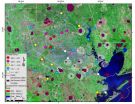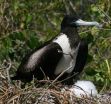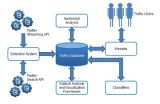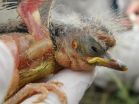(Press-News.org) HOUSTON, Sept. 28, 2010 – A large section of northwestern Harris County – particularly the Jersey Village area – is sinking rapidly, according to a University of Houston (UH) geologist who has analyzed GPS data measuring ground elevation in the Houston area.
Some points in Jersey Village are subsiding by up to 5.5 centimeters (about 2 inches) a year, said Shuhab Khan, an associate professor of geology at UH. Khan, along with UH geology professor Kevin Burke and former Ph.D. student and UH alumnus Richard Engelkemeir, studied a decade's worth of detailed GPS data measuring the elevation of various points throughout the Houston area. They recently published their findings in the journal Tectonophysics, an international medium for the publication of research in the fields of geotectonics, geology and physics of the Earth's crust and interior.
"A sprawling area of northwestern Harris County is gradually subsiding, but the points in Jersey Village are sinking fastest," Khan said. "The area is roughly 30 kilometers by 30 kilometers, which is the equivalent of about 18 miles by 18 miles."
The raw data was obtained from the Houston-Galveston Coastal Subsidence District. Khan's study processed and analyzed GPS data from more than two dozen measurement points throughout the county, covering 1995 to 2005. Extrapolating data from six measurement stations, Khan roughly marks the boundaries of the vast subsiding area. At three of those measurement spots, centered around Jersey Village, the sinking was particularly fast.
"Because GPS can pinpoint location with millimeter precision, it is an excellent tool to measure even the most subtle changes over time in the ground," Khan said. "The most likely reason for the sinking of Jersey Village is the withdrawal of water from deep beneath the surface. While groundwater withdrawal has ceased in most of the Houston area, it continues in the northwestern part of the county that has seen a rapid growth in population."
The fate of the Brownwood neighborhood near Baytown illustrates the potential consequences of rapid subsidence, Khan said. When the residential subdivision was first developed in the 1930s, ground elevation was about 3 meters (nearly 10 feet) above sea level. Forty years later, the neighborhood stood just half a meter above sea level and was subject to frequent flooding. In 1983, Hurricane Alicia destroyed the subdivision, and the area became the Baytown Nature Center. The sinking of Brownwood was attributed to the massive groundwater withdrawal by the petrochemical plants along the Houston Ship Channel.
The research team hopes the new data that pinpoint precisely where and how quickly the ground is moving can aid the region's builders and city planners to mitigate the damage caused by the ongoing subsidence northwest of Houston.
Khan's analysis also showed some gradual rising southeast of Houston along the coast. The coastal area has several vast salt domes deep beneath the surface. Since salt has a lower density than common crustal rocks, it rises and pushes up the ground. He said that further study also might link salt dome activity along the coast to the surface movements occurring elsewhere in the region.
Khan's previous work on the region's elevation has already garnered widespread attention from local media, homeowners and builders. Geologists had long known about the existence of faults in southeast Texas, but Khan and Engelkemeir produced a comprehensive map in 2008 pinpointing the precise locations of some 300 faults traversing the Houston area.
The research team stressed these local fault lines are not the kinds that wreak havoc in earthquake-prone California, but they can move up to an inch per year. Such movement over several years can cause serious damage to buildings and streets that straddle a fault line.
INFORMATION:
For related research, visit http://www.uh.edu/news-events/pdf/2008%20faultline%20research%20PR.
About the University of Houston
The University of Houston is a comprehensive national research institution serving the globally competitive Houston and Gulf Coast Region by providing world-class faculty, experiential learning and strategic industry partnerships. UH serves more than 38,500 students in the nation's fourth-largest city, located in the most ethnically and culturally diverse region of the country.
About the College of Natural Sciences and Mathematics
The UH College of Natural Sciences and Mathematics, with 181 ranked faculty and approximately 4,500 students, offers bachelor's, master's and doctoral degrees in the natural sciences, computational sciences and mathematics. Faculty members in the departments of biology and biochemistry, chemistry, computer science, earth and atmospheric sciences, mathematics and physics conduct internationally recognized research in collaboration with industry, Texas Medical Center institutions, NASA and others worldwide.
For more information about UH, visit the university's Newsroom at http://www.uh.edu/news-events/.
To receive UH science news via e-mail, visit http://www.uh.edu/news-events/mailing-lists/sciencelistserv/index.php.
For additional news alerts about UH, follow us on Facebook at http://www.facebook.com/UHNewsEvents and Twitter at http://twitter.com/UH_News.
UH geologists find parts of Northwest Houston sinking rapidly
Researchers analyze decade's worth of GPS data for study
2010-09-29
ELSE PRESS RELEASES FROM THIS DATE:
AMIA cites concerns about proposed HIPAA modifications
2010-09-29
In comments sent to Secretary Kathleen Sebelius at the U.S. Department of Health and Human Services, AMIA (American Medical Informatics Association) called out 10 specific challenges to proposed modifications to HIPAA Privacy and Enforcement Rules. AMIA's comments, sent on behalf of its membership of 4,000 informatics professionals, detail key issues of concern related to the Notice of Proposed Rulemaking (NPRM) on HIPAA modifications, along with suggestions for models of change. The following areas were cited:
Business Associates and Subcontractors
Position: AMIA ...
Smithsonian researchers find differences between Galapagos and mainland frigatebirds
2010-09-29
Although the magnificent frigatebird may be the least likely animal on the Galapagos Islands to be unique to the area, it turns out the Galapagos population of this tropical seabird may be its own genetically distinct species warranting a new conservation status, according to a paper by researchers at the Smithsonian Conservation Biology Institute, the Smithsonian's National Museum of Natural History and the University of Missouri-St. Louis published last week in the scientific journal Proceedings of the Royal Society B.
The Galapagos Islands, which once served as a scientific ...
The dual nature of dew
2010-09-29
When the scientific and spiritual worlds collide, they do so in the most surprising ways. Classical meteorological and plant science has, in the last century, insisted that dew negatively affects plant life, leading to rot and fungus. But in the Judeo-Christian tradition, dew is most welcomed as an important source of vegetative and plant life, celebrated in poetry and prayer.
Now Prof. Pinhas Alpert of Tel Aviv University's Department of Geophysics and Planetary Sciences has developed an explanation for the perplexing paradox with his colleagues. According to scientific ...
Noise and chemicals: Workers are losing their hearing
2010-09-29
A study carried out by Spanish researchers has shown that the presence of chemical contaminants can interact with noise and modify, for good or for bad, the way in which work-related "deafness" – which is increasingly common among young people – manifests itself. Noise-related hearing loss is the most common occupational disease in Europe.
"Workers exposed to noise in the presence of metalworking fluids exhibit a delay in hearing alteration in comparison with those exposed only to noise at the same intensity. However, those exposed to noise in the presence of welding ...
Truthy.indiana.edu to search, identify smear tactics, Twitter-bombs through election runup
2010-09-29
Astroturfers, Twitter-bombers and smear campaigners need beware this election season as a group of leading Indiana University information and computer scientists today unleashed Truthy.indiana.edu, a sophisticated new Twitter-based research tool that combines data mining, social network analysis and crowdsourcing to uncover deceptive tactics and misinformation leading up to the Nov. 2 elections.
Combing through thousands of tweets per hour in search of political keywords, the team based out of IU's School of Informatics and Computing will isolate patterns of interest ...
Immunization coverage key to good health locally, globally
2010-09-29
FORT WORTH, TEXAS, USA, September 28, 2010—The outbreak of whooping cough in Texas, California, and other states this year underscores the critical importance of widespread vaccination coverage, both locally as well as around the world, said a leading global health official attending conferences on world affairs and immunization in Fort Worth this week.
Alex Palacios, a special representative of the GAVI Alliance, a public-private partnership aimed at increasing immunisation rates in poor countries, said that despite public health advances in the US and other wealthy countries ...
Tracking down pathogenic yeasts
2010-09-29
More than half of all people are hosts to Candida albicans in their bodies. This species might be located on their skin or mucous membranes or in the intestines – frequently without causing any symptoms. However, it can be dangerous to patients whose immunological system has been weakened such as after organ transplants or chemotherapy with cancer. Then, this fungus penetrates into deeper layers of tissue and uses the blood system to spread throughout the body. In Germany alone, several thousand people die from systemic candida infections every year.
But why does Candida ...
Understanding Missouri River's sediment dynamics key to protecting endangered species
2010-09-29
Sept. 28, 2010 -- A new report from the National Research Council says that more organized and systematic procedures for gathering and evaluating data on Missouri River sediment are required to improve decisions and better manage the river's ecosystem, including protecting endangered species and developing water quality standards. In addition, the report finds that the U.S. Army Corps of Engineers' projects to restore habitats along the Missouri River are not significantly changing the size of the oxygen-depleted "dead zone" in the Gulf of Mexico, nor will options for ...
Wheel in a corset
2010-09-29
Just imagine your car suddenly comes to a halt on a quiet country road, and it's only four years old. This is not a pleasant thought. A breakdown is expensive. Not to mention the safety risk to the occupants – because the breakdown was caused by the extremely light plastic wheels so highly praised by the car salesman. One of them has broken. »Such a scenario must, of course, never happen in reality,« states Prof. Dr.-Ing. Andreas Büter from the Fraunhofer Institute for Structural Durability and System Reliability LBF in Darmstadt. The experts there specialize in operational ...
Study finds potential climate change side effect: More parasites on South American birds
2010-09-29
A Wildlife Conservation Society (WCS) study on nesting birds in Argentina finds that increasing temperatures and rainfall—both side effects of climate change in some parts of the world—could be bad for birds of South America, but great for some of their parasites which thrive in warmer and wetter conditions.
The study, which looked at nesting forest birds in Santa Fe, Argentina, found that increases in temperature and precipitation produce a bumper crop of parasitic fly larvae of the species Philornis torquans, parasites that burrow into the skin of baby birds to feed. ...
LAST 30 PRESS RELEASES:
Heart-brain connection: international study reveals the role of the vagus nerve in keeping the heart young
Researchers identify Rb1 as a predictive biomarker for a new therapeutic strategy in some breast cancers
Survey reveals ethical gaps slowing AI adoption in pediatric surgery
Stimulant ADHD medications work differently than thought
AI overestimates how smart people are, according to HSE economists
HSE researchers create genome-wide map of quadruplexes
Scientists boost cell "powerhouses" to burn more calories
Automatic label checking: The missing step in making reliable medical AI
Low daily alcohol intake linked to 50% heightened mouth cancer risk in India
American Meteorological Society announces Rick Spinrad as 2026 President-Elect
Biomass-based carbon capture spotlighted in newly released global climate webinar recording
Illuminating invisible nano pollutants: advanced bioimaging tracks the full journey of emerging nanoscale contaminants in living systems
How does age affect recovery from spinal cord injury?
Novel AI tool offers prognosis for patients with head and neck cancer
Fathers’ microplastic exposure tied to their children’s metabolic problems
Research validates laboratory model for studying high-grade serous ovarian cancer
SIR 2026 delivers transformative breakthroughs in minimally invasive medicine to improve patient care
Stem Cell Reports most downloaded papers of 2025 highlight the breadth and impact of stem cell research
Oxford-led study estimates NHS spends around 3% of its primary and secondary care budget on the health impacts of heat and cold in England
A researcher’s long quest leads to a smart composite breakthrough
Urban wild bees act as “microbial sensors” of city health.
New study finds where you live affects recovery after a hip fracture
Forecasting the impact of fully automated vehicle adoption on US road traffic injuries
Alcohol-related hospitalizations from 2016 to 2022
Semaglutide and hospitalizations in patients with obesity and established cardiovascular disease
Researchers ‘listen in’ to embryo-mother interactions during implantation using a culture system replicating the womb lining
How changing your diet could help save the world
How to make AI truly scalable and reliable for real-time traffic assignment?
Beyond fragmented markets: A new framework for efficient and stable ride-pooling
Can shape priors make road perception more reliable for autonomous driving?
[Press-News.org] UH geologists find parts of Northwest Houston sinking rapidlyResearchers analyze decade's worth of GPS data for study






